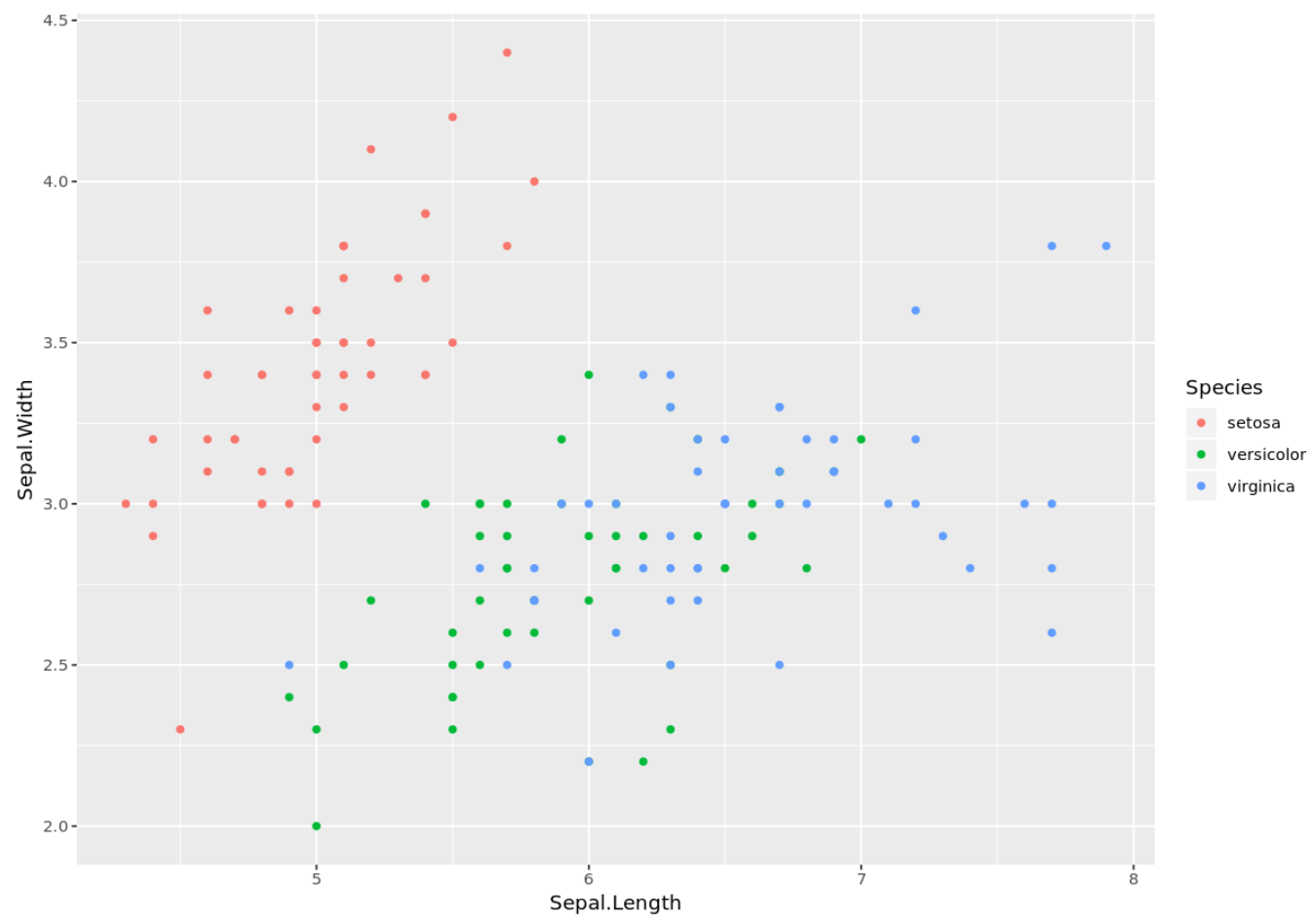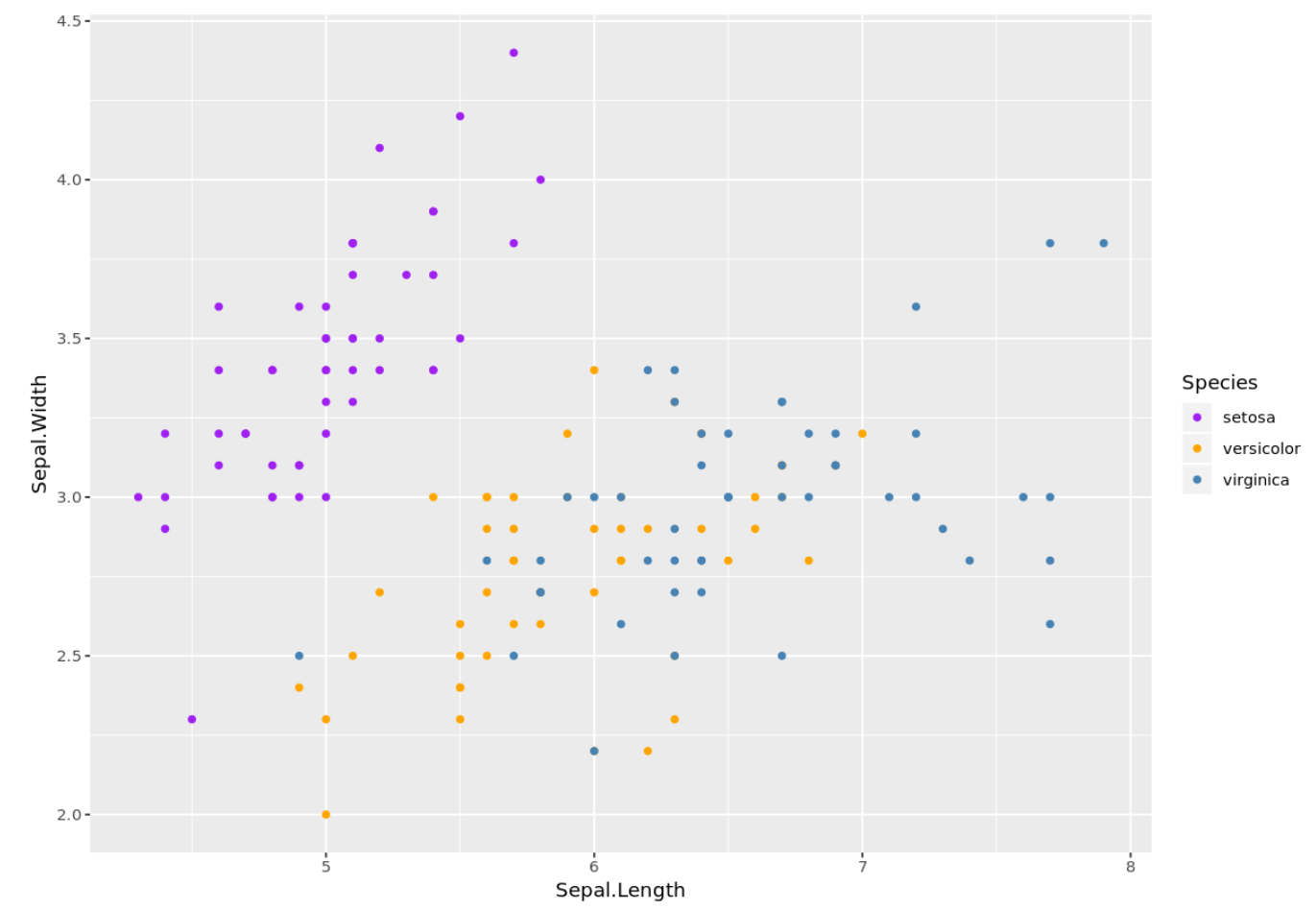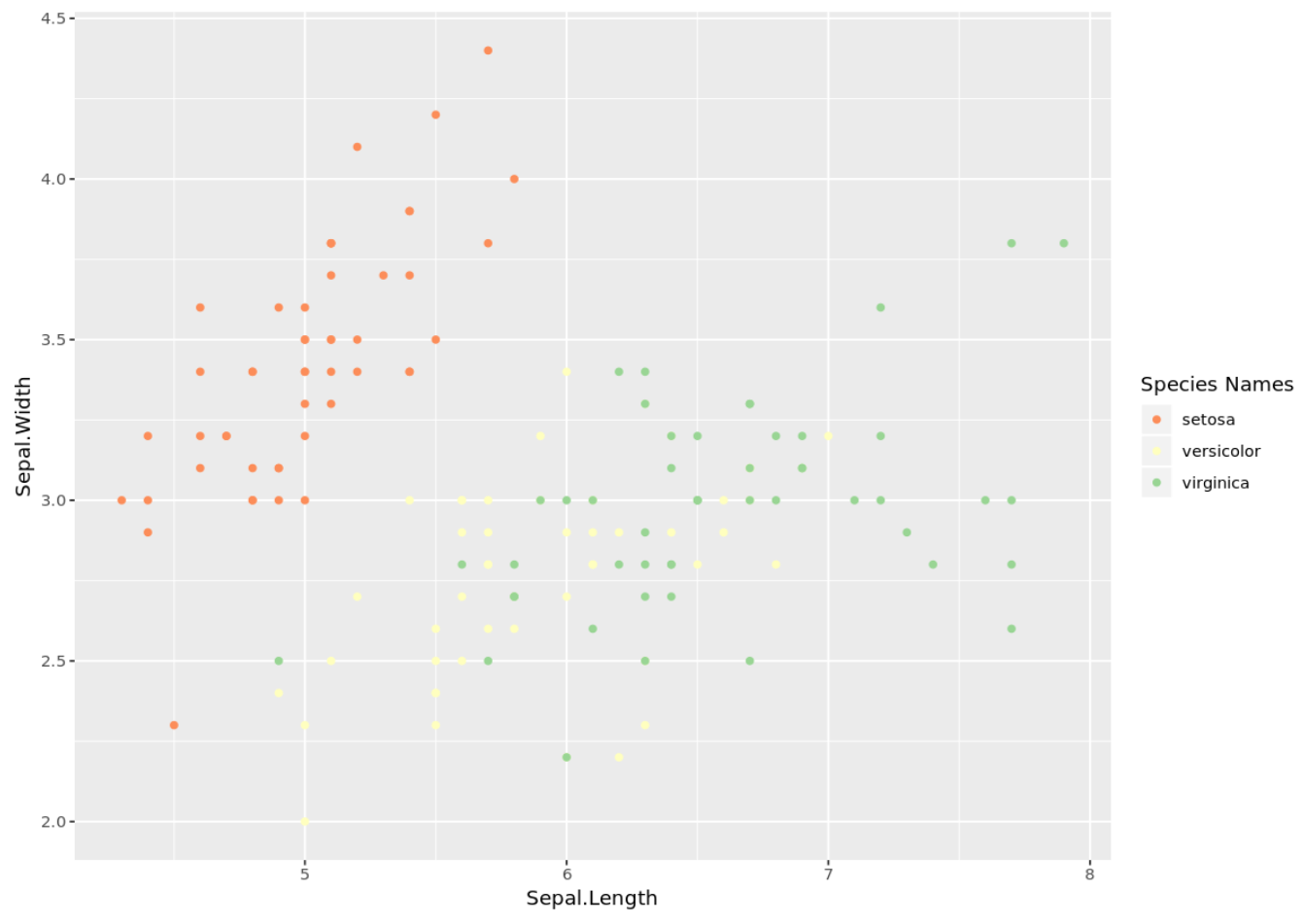Ggplot2 で因子によって色を割り当てる方法 (例あり)
多くの場合、カテゴリカル変数に基づいて ggplot2 プロット内の点に色を割り当てたい場合があります。
幸いなことに、これは次の構文を使用して簡単に実行できます。
ggplot(df, aes (x=x_variable, y=y_variable, color=color_variable)) +
geom_point()
このチュートリアルでは、 irisという組み込みの R データセットを使用してこの構文を実際に使用する方法の例をいくつか示します。
#view first six rows of iris dataset
head(iris)
Sepal.Length Sepal.Width Petal.Length Petal.Width Species
1 5.1 3.5 1.4 0.2 setosa
2 4.9 3.0 1.4 0.2 setosa
3 4.7 3.2 1.3 0.2 setosa
4 4.6 3.1 1.5 0.2 setosa
5 5.0 3.6 1.4 0.2 setosa
6 5.4 3.9 1.7 0.4 setosa
例 1: デフォルトの色を使用する
次のコードは、 Species階乗変数に基づいて ggplot2 プロット内の点にデフォルトの色を割り当てる方法を示しています。
library (ggplot2) ggplot(iris, aes (x=Sepal.Length, y=Sepal.Width, color=Species)) + geom_point()

カラー スケールやカスタム カラー リストを指定しなかったため、ggplot2 は単にデフォルトの赤、緑、青のカラー リストをポイントに割り当てました。
例 2: カスタム カラーを使用する
次のコードは、 scale_color_manual()を使用して ggplot2 プロット内のポイントにカスタム カラーを割り当てる方法を示しています。
library (ggplot2) ggplot(iris, aes (x=Sepal.Length, y=Sepal.Width, color=Species)) + geom_point() + scale_color_manual( values = c(" setosa " = " purple ", " versicolor =" orange ", " virginica "=" steelblue "))

16 進数のカラー コードを使用して色を指定することもできることに注意してください。
例 3: カスタム カラー スケールを使用する
次のコードは、 RColorBrewerパッケージのカスタム カラー スケールを使用して、ggplot2 プロット内の点にカスタム カラーを割り当てる方法を示しています。
library (ggplot2) library (RColorBrewer) #define custom color scale myColors <- brewer. pal (3, " Spectral ") names(myColors) <- levels(iris$Species) custom_colors <- scale_color_manual(name = " Species Names ", values = myColors) ggplot(iris, aes (x=Sepal.Length, y=Sepal.Width, color=Species)) + geom_point() + custom_colors

追加リソース
ggplot2 で並列プロットを作成する方法
ggplot2で凡例のタイトルを変更する方法
最高の ggplot2 テーマの完全ガイド